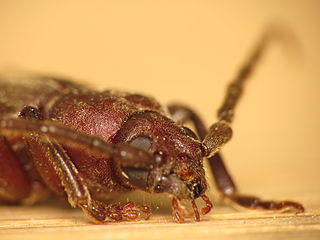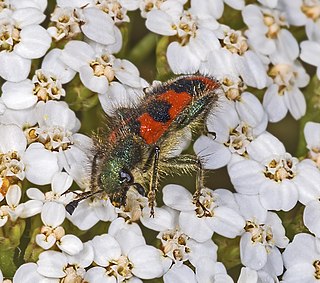
Suina is a suborder of omnivorous, non-ruminant artiodactyl mammals that includes the domestic pig and peccaries. A member of this clade is known as a suinan. Suina includes the family Suidae, termed suids, known in English as pigs or swine, as well as the family Tayassuidae, termed tayassuids or peccaries. Suines are largely native to Africa, South America, and Southeast Asia, with the exception of the wild boar, which is additionally native to Europe and Asia and introduced to North America and Australasia, including widespread use in farming of the domestic pig subspecies. Suines range in size from the 55 cm (22 in) long pygmy hog to the 210 cm (83 in) long giant forest hog, and are primarily found in forest, shrubland, and grassland biomes, though some can be found in deserts, wetlands, or coastal regions. Most species do not have population estimates, though approximately two billion domestic pigs are used in farming, while several species are considered endangered or critically endangered with populations as low as 100. One species, Heude's pig, is considered by the International Union for Conservation of Nature to have gone extinct in the 20th century.

Shae-Lynn Bourne is a Canadian ice dancer and choreographer. In 2003, she and partner Victor Kraatz became the first North American ice dancers to win a World Championship. They competed at three Winter Olympic Games, placing 10th at the 1994 Winter Olympics, 4th at the 1998 Winter Olympics, and 4th at the 2002 Winter Olympics.

Victor Kraatz, is a Canadian former ice dancer. In 2003, he and his partner, Shae-Lynn Bourne, became the first North American ice dancers to win a World Championship.

Flower chafers are a group of scarab beetles comprising the subfamily Cetoniinae. Many species are diurnal and visit flowers for pollen and nectar, or to browse on the petals. Some species also feed on fruit. The group is also called fruit and flower chafers, flower beetles and flower scarabs. There are around 4,000 species, many of them still undescribed.

Valgus is a genus of beetles. Most described species are found in Asia, with some reaching into northern Africa and Europe, and three species native to the New World. One species is found in South Africa.

Lomaptera are beetles from the subfamily Cetoniinae, tribe Schizorhinini. The genus was created by Gory & Percheron, in 1833. The type species of the genus is Cetonia papua Guérin-Méneville, 1830. These cetoniids have the tip of the scutellum invisible, which makes the difference with the genus Ischiopsopha.

Dicerca is a genus of beetles in the family Buprestidae. It contains the following species:

Gnathocera is a genus of beetles belonging to the family Scarabaeidae.

Agapanthia is a genus of flat-faced longhorn beetle belonging to the family Cerambycidae, subfamily Lamiinae.

Leptorhabdium is a genus of beetle in the family Cerambycidae. It contains the following species:

Asemini is a tribe of beetles in the subfamily Spondylidinae, containing the following genera and species:

Trichodes is a genus of checkered beetle belonging to the family Cleridae, subfamily Clerinae.

Dorcadion is a genus of longhorn beetles of the subfamily Lamiinae.

Xeloma are beetles from the subfamily Cetoniinae, tribe Cetoniini. The genus contains thirteen recognised species found in various countries of Sub-Saharan Africa.

Oxytelus is a genus of spiny-legged rove beetles in the family Staphylinidae. There are more than 50 described species in Oxytelus.

Colon is a genus of round fungus beetles in the family Leiodidae. There are at least 80 described species in Colon.
Philotermes is a genus of rove beetles in the family Staphylinidae. There are about seven described species in Philotermes.
Omanitherium is a genus of an extinct genus of barytheriid proboscidean that lived during the early Oligocene in Oman. It belongs to the family Barytheriidae, which represented the first large size proboscideans to appear in the fossil record and were characterized by a strong sexual dimorphism.
Agaricochara is a genus of beetle belonging to the family Staphylinidae.
Allocotocerus is a genus of water beetles in the family Hydrophilidae, first described by Ernst Gustav Kraatz in 1883. The decision for synonymy is based on Hansen (1999).















